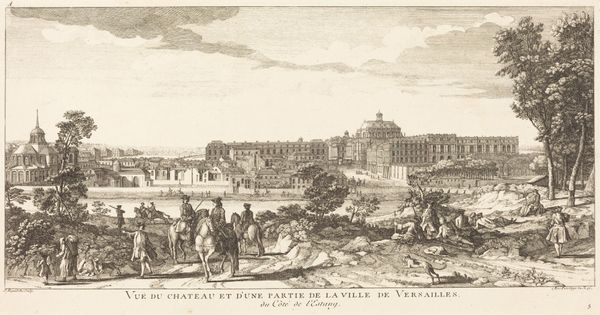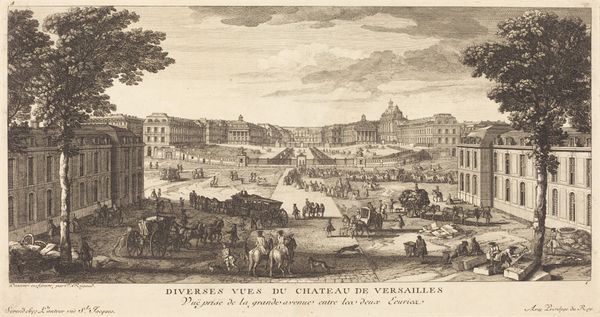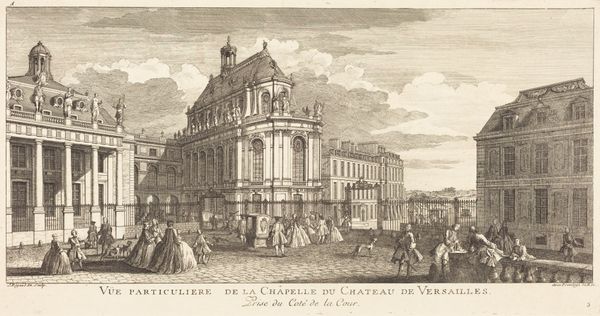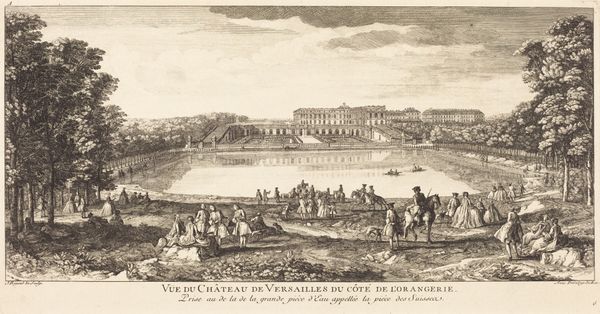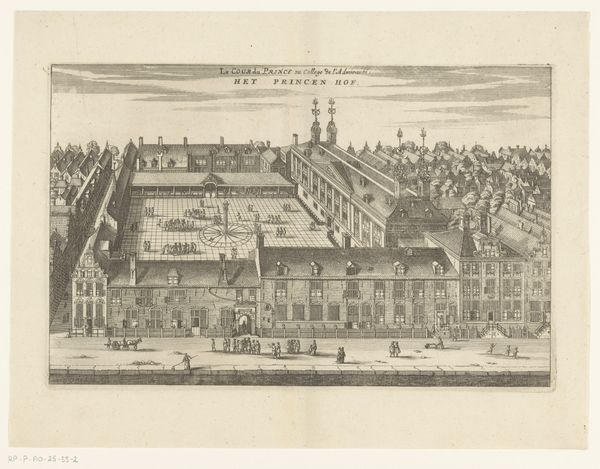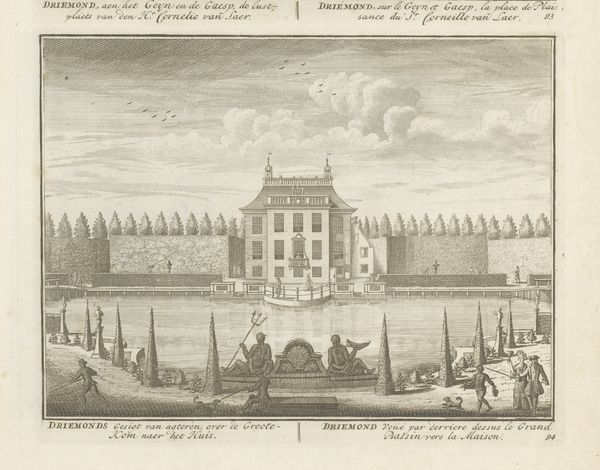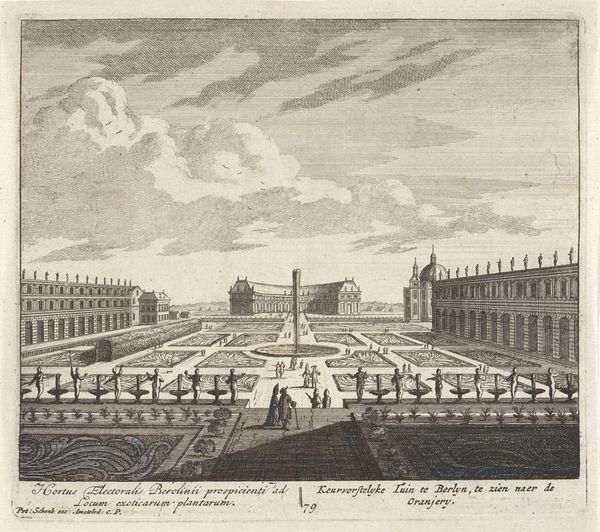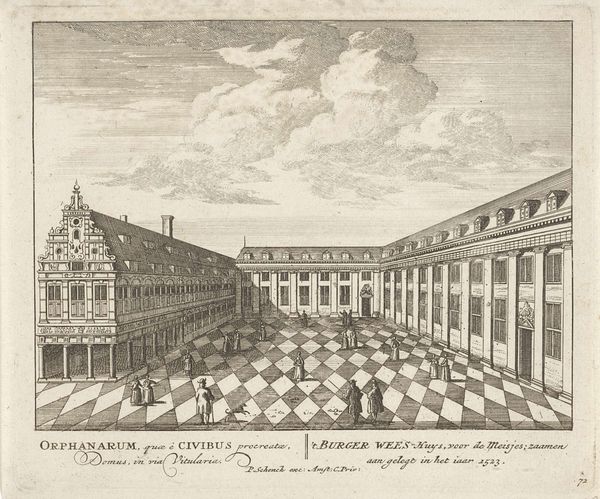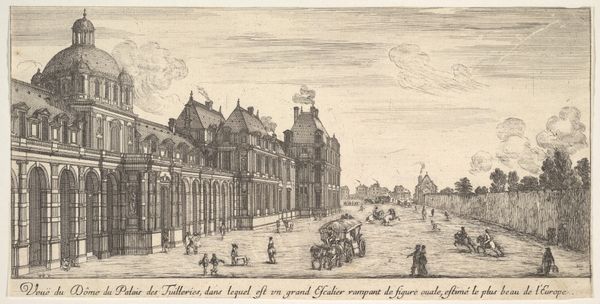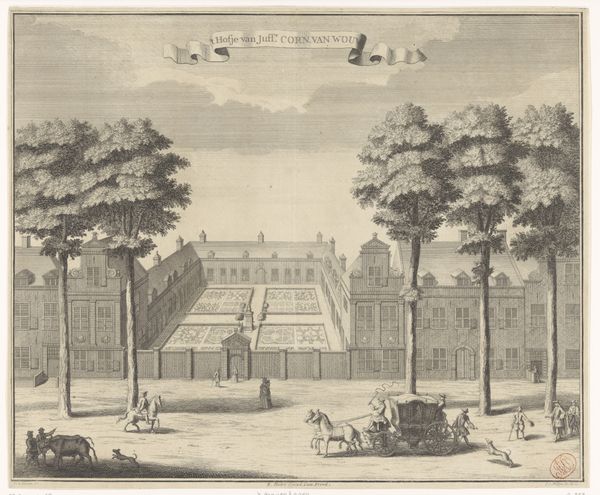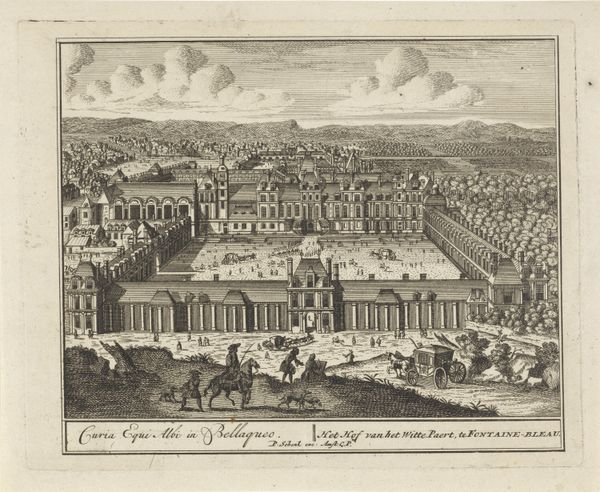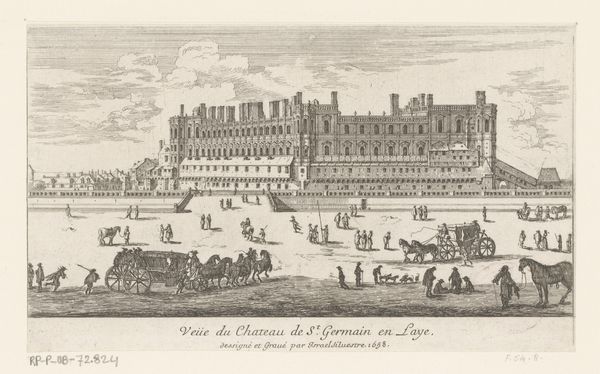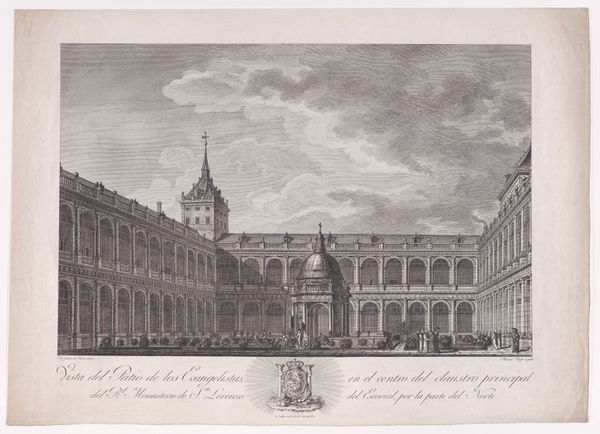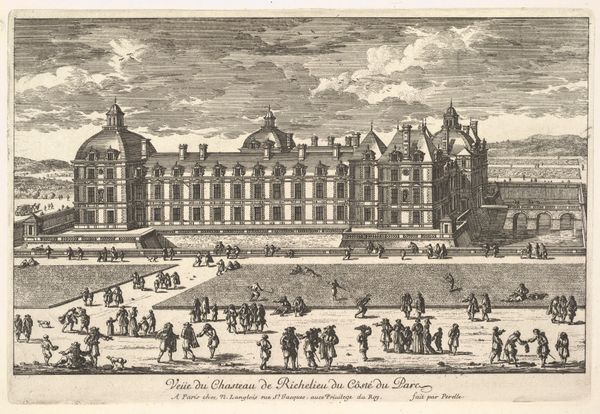
Vue du Chateau de Versailles Prise du Cote dela Terrasse vis a vis la Chapelle
0:00
0:00
print, engraving, architecture
#
baroque
# print
#
landscape
#
cityscape
#
engraving
#
architecture
Copyright: National Gallery of Art: CC0 1.0
This print of the Chateau de Versailles was made by Jean-Baptiste Rigaud, likely using an etching or engraving technique. Look closely, and you’ll see how these processes involve the careful use of tools to incise lines into a metal plate, which is then inked and pressed onto paper. The material quality of the print—its lines and tones—create a picturesque view and communicate important information about power. The image itself serves as propaganda, projecting an image of royal authority and sophistication through architecture and landscape design. This level of grandeur depended on systems of labor and wealth extraction. Prints like this one also played a crucial role in disseminating images and ideas during the Enlightenment. They facilitated the circulation of visual information, contributing to broader social and cultural shifts. So, next time you see a print, consider the intricate interplay between materials, making, and social context.
Comments
No comments
Be the first to comment and join the conversation on the ultimate creative platform.
